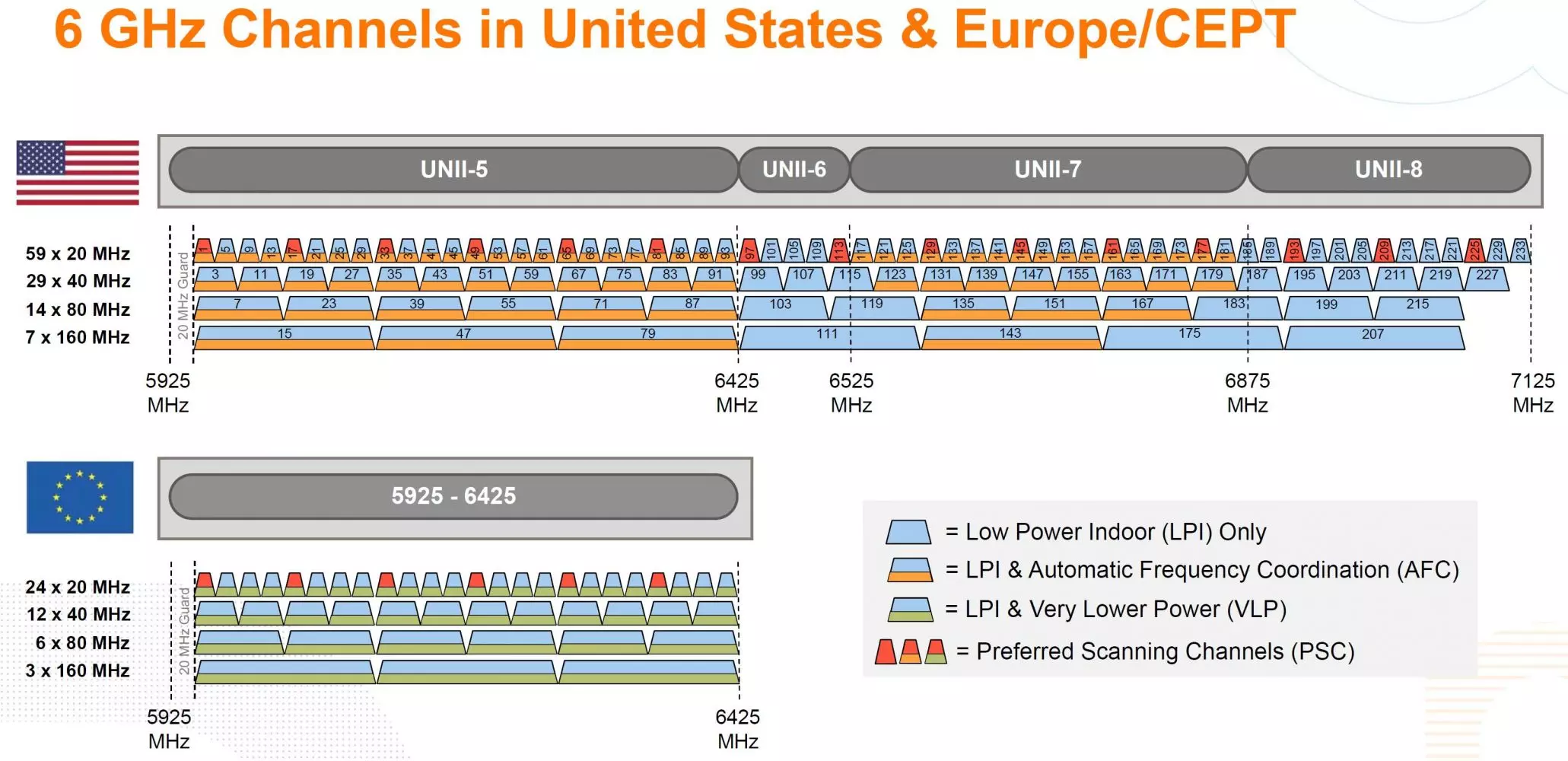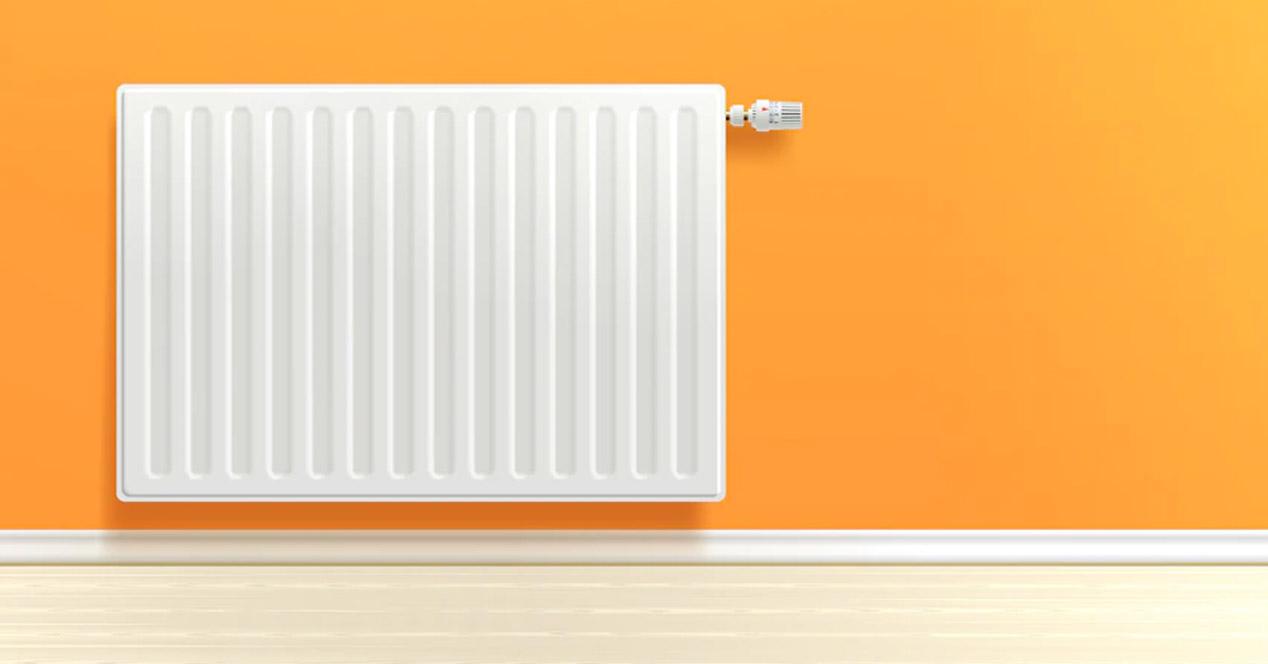
WiFi channels in 6GHz
The new 6GHz band provides a bandwidth of 1.2GHz, this new frequency band is available from 5925MHz to 7125MHz, and within this huge frequency band is where all devices with the new Wi-Fi standard will connect. Fi 6E, but also the devices with the future Wi-Fi 7 that will arrive in the next few years. Therefore, this new frequency band for Wi-Fi networks is very important, because it is the future of wireless connectivity in all our homes.
In Europe we only have the UNII-5 band available, which ranges from 5925MHz to 6425MHz, this means that we have 500MHz of bandwidth to connect the different devices. In this frequency band we have a total of 24 channels of 20MHz channel width, 12 channels of 40MHz channel width, 6 channels of 80MHz channel width and 3 channels of 160MHz channel width.
By default, the Wi-Fi 6E standard uses 160MHz of channel width, therefore, we can only connect a total of 3 devices to the Wi-Fi network in this frequency band, without interference between them due to the closeness. In the case of the future Wi-Fi 7 standard, we must remember that we have a channel width of up to 320MHz, so we can only connect a device with this channel width, as soon as there are two nearby devices we will have interference between them.
In the United States they not only have the UNII-5 band, but they also have the bands of UNII-6, UNII-7 and UNII-8. This means that they can use the new frequency band from 6425MHz to 7125MHz, something that we cannot use in Europe, that is, we are left without using an additional 700MHz of bandwidth that they can use.
In the following graph you can see the available channels that they have in the US and those that we have in Europe.

Why is Wi-Fi 6E worse in Europe?
Having fewer channels available to broadcast with routers, Wi-Fi Mesh systems or professional Wi-Fi access points, means that we are going to have interference with other wireless networks, whether those of our neighbors or our own Wi-Fi access points. that use 160MHz of channel width. When we have little bandwidth available, but many wireless networks broadcasting, we will have:
- Interference with neighboring Wi-Fi networks. This is the main problem, as soon as our neighbors also use this 6GHz frequency band, either with the Wi-Fi 6E standard or with the future Wi-Fi 7, each wireless network will be configured in automatic mode, selecting the free channel available. We must remember that with 160MHz of channel width we only have a total of 3 channels available, therefore, there will come a time when a neighbor selects the same channel as another, and it will cause interference. (Diazepam)
- Interference with other WiFi APs. When network administrators configure a WiFi wireless network with access points, it is essential to select channels that do not overlap each other, to avoid self-generated interference. If we had more channels available, we could minimize interference from access points, and be able to broadcast at full power without any problems. Due to the fact that we only have 3 channels of 160MHz, we will have to “play” with the emission power so that there is not too much interference.
By having interference in a wireless network, as a consequence, we are also going to have:
- high latency: There will be occasions where we have a high latency of the connection, because we will have to resend the transmission made. When there is a lot of interference in a WiFi network, we will notice sporadic “lags”, and even continuous if the interference is too high.
- Slow speed: one of the main characteristics of interference is that the real speed that we will obtain via WiFi decreases a lot. Depending on the level of interference we have, we can lose more than 50% of the WiFi speed that we usually have.
- Cuts in the connection: It is possible that at certain times, especially if we connect far from the WiFi router or WiFi access point, we have cuts in the WiFi connection.
As you have seen, Wi-Fi 6E works clearly worse in Europe than in the United States, where they have more bandwidth available to connect to the wireless network, and therefore less interference with other Wi-Fi networks. Of course, the future Wi-Fi 7 standard will also have similar problems, unless Europe enables the rest of the 6GHz frequency band like the US does.



